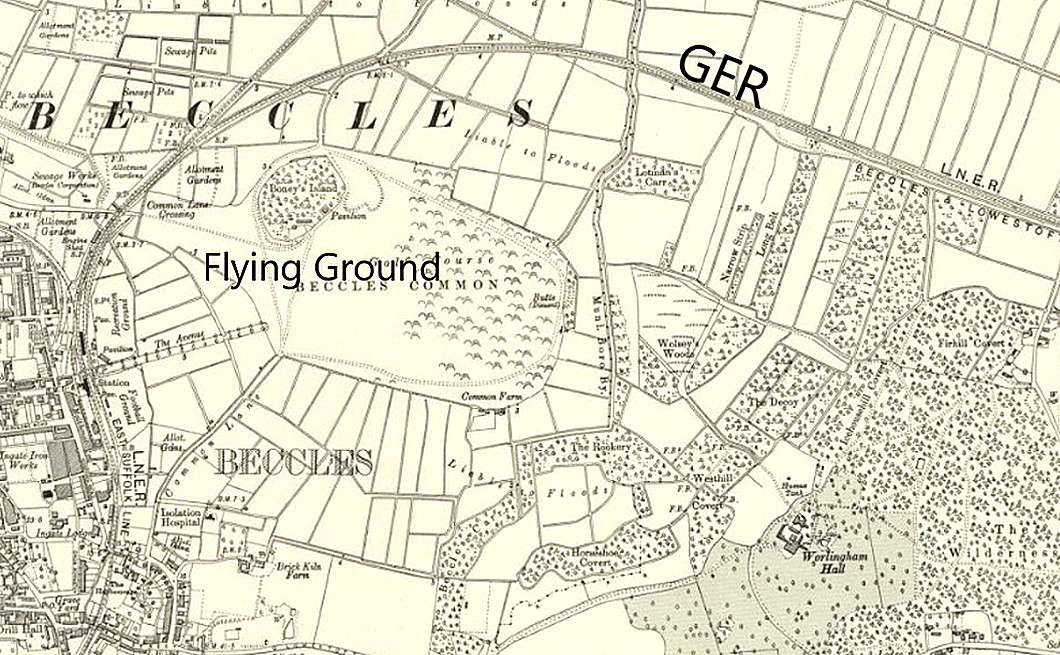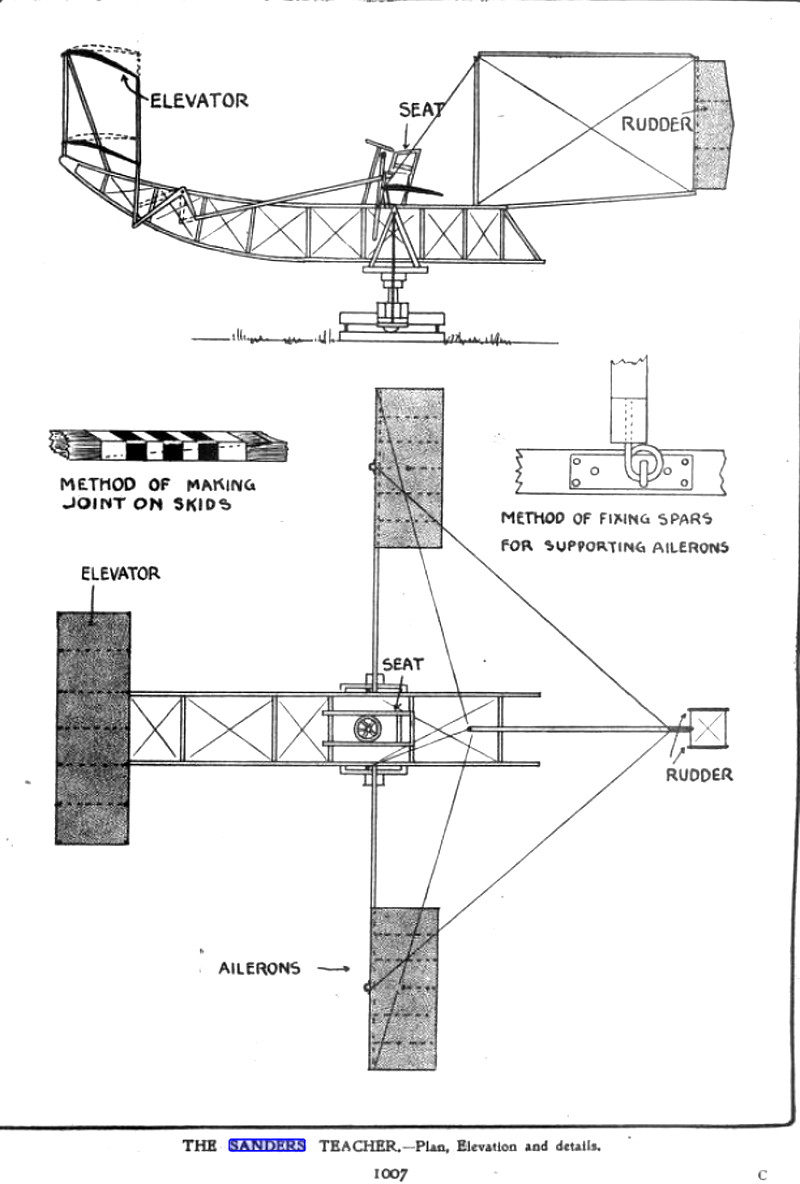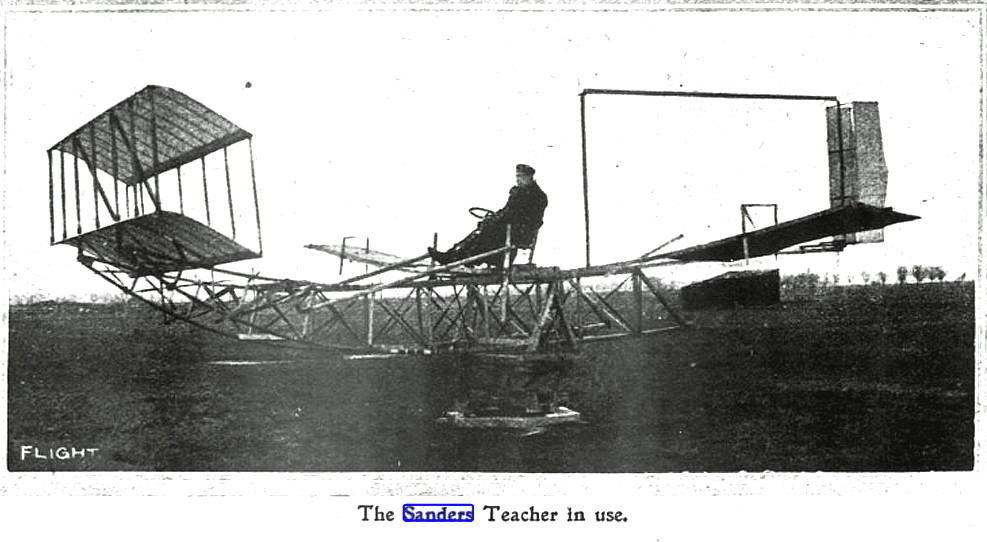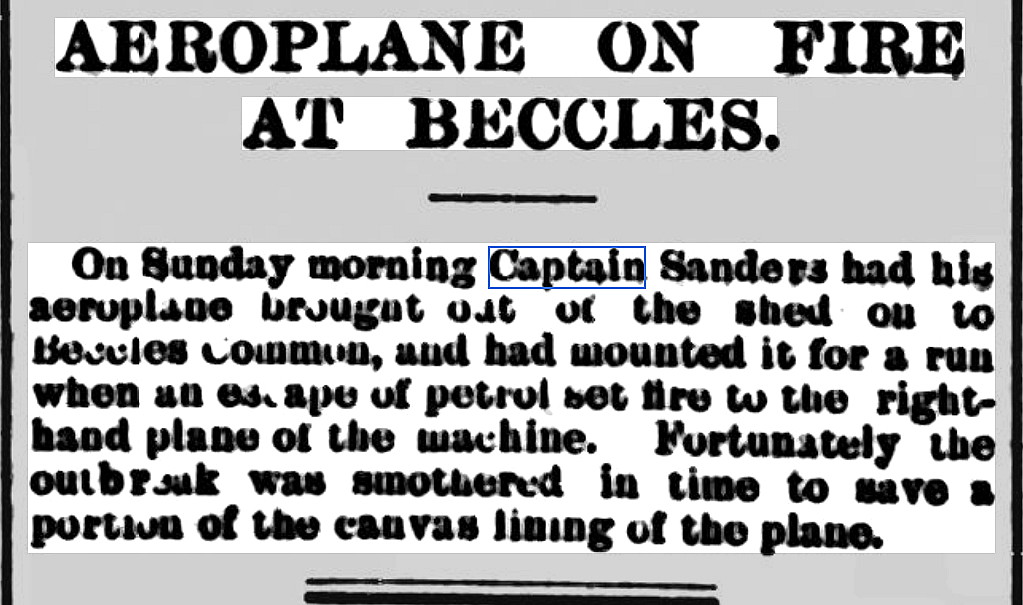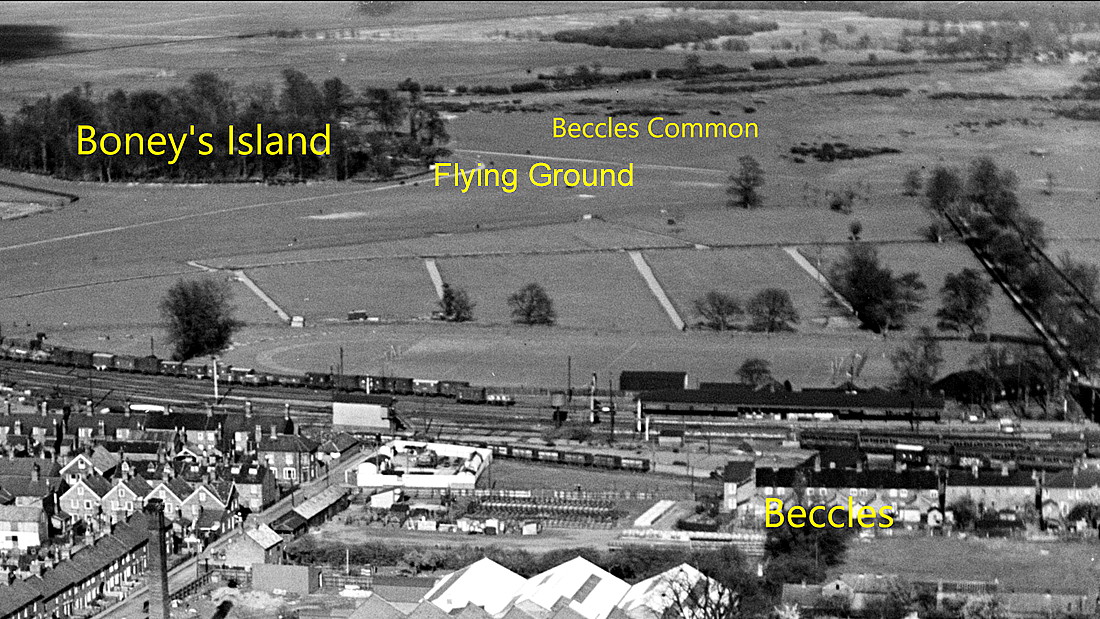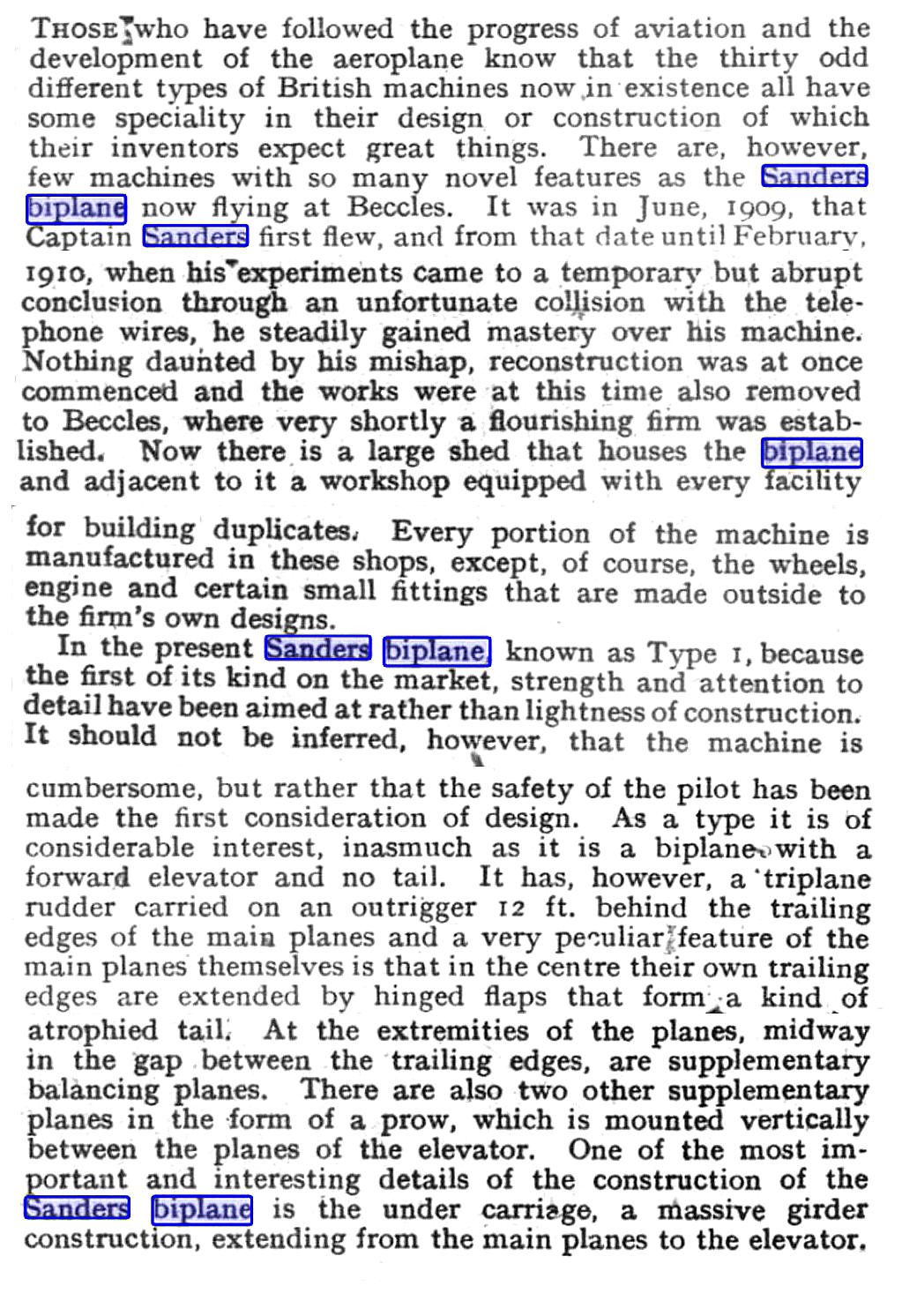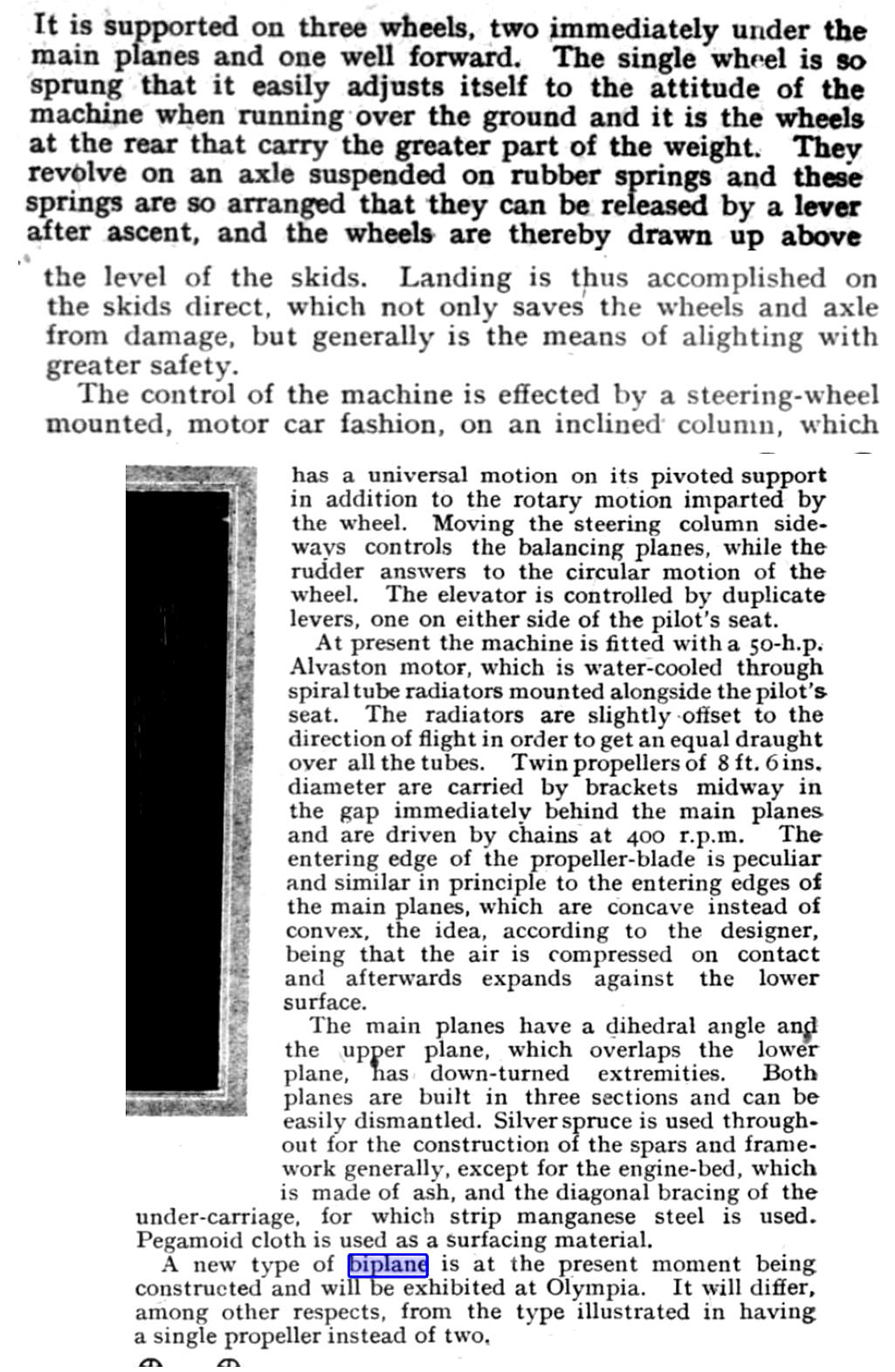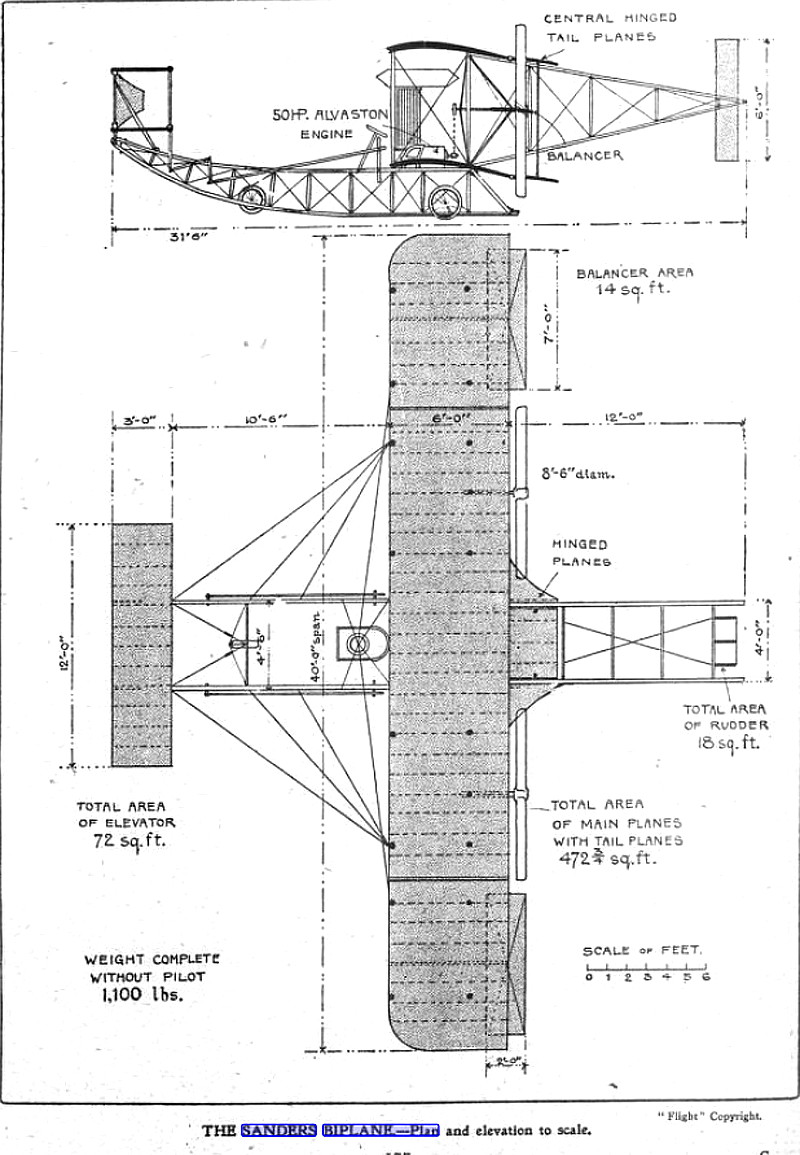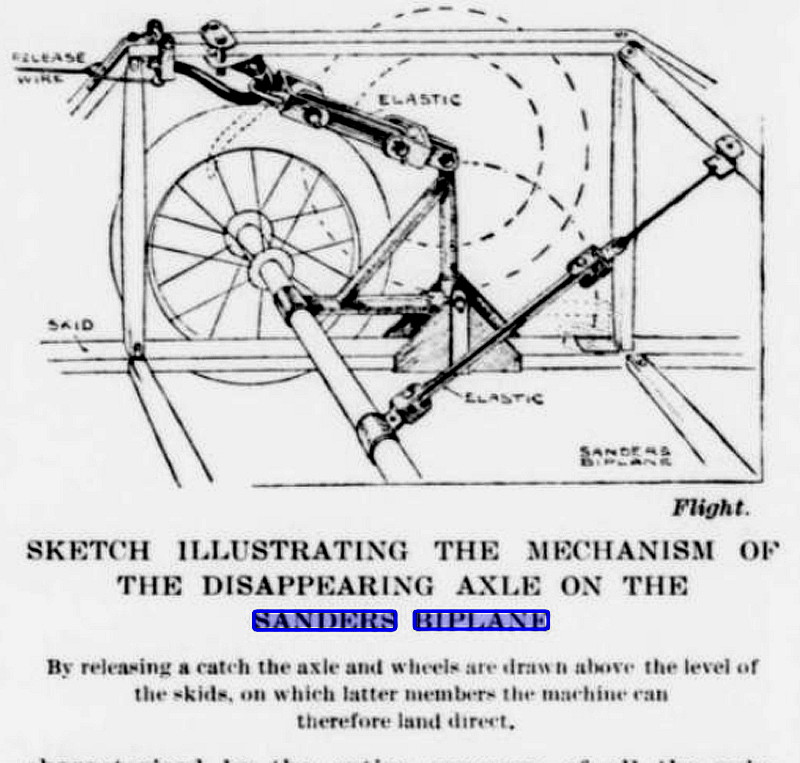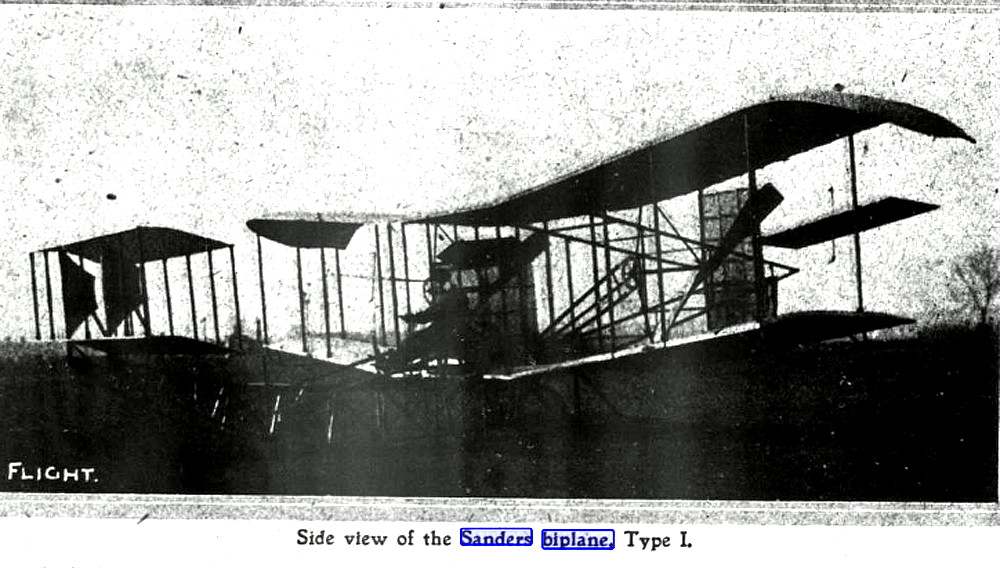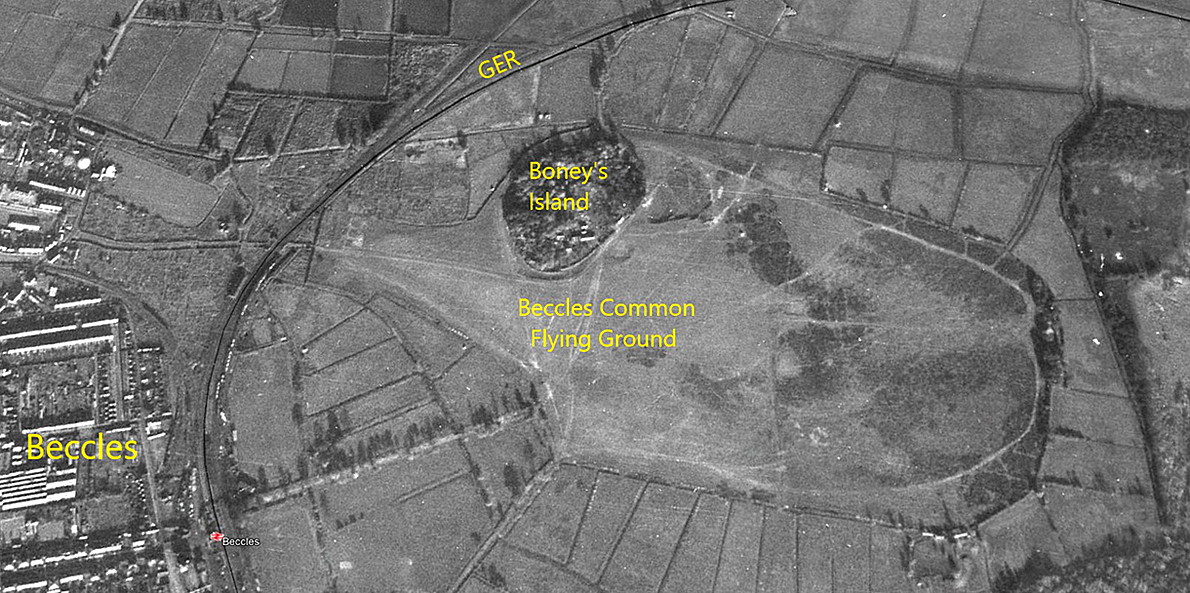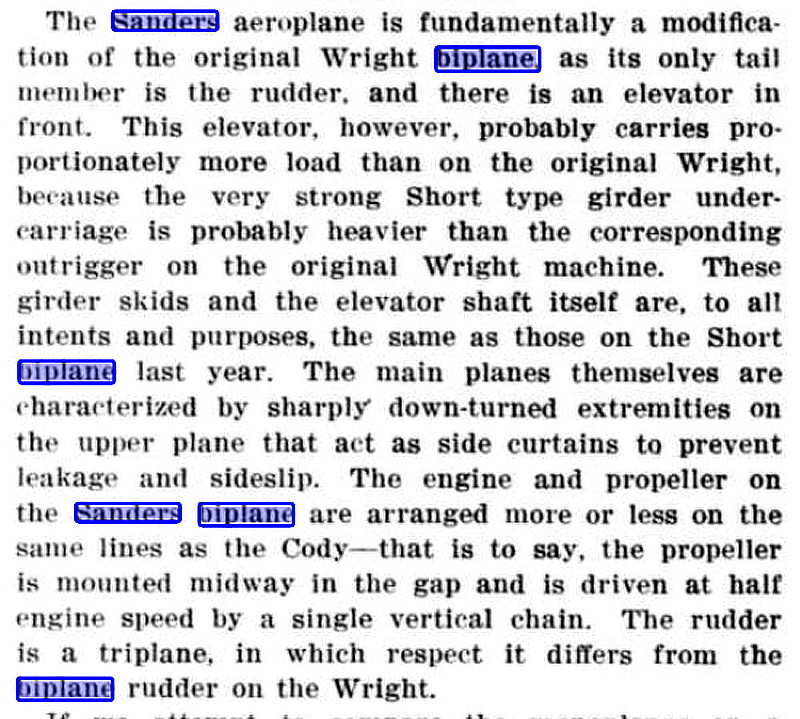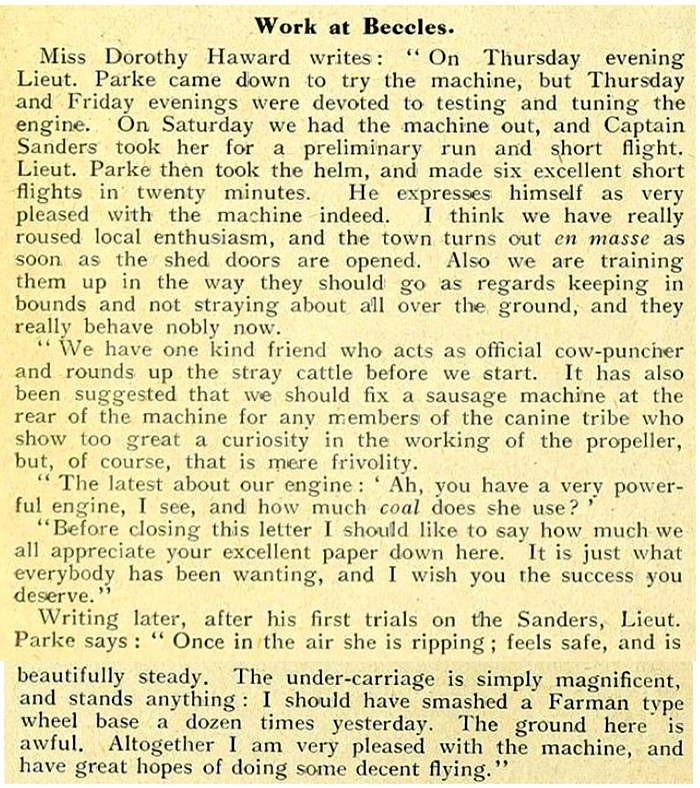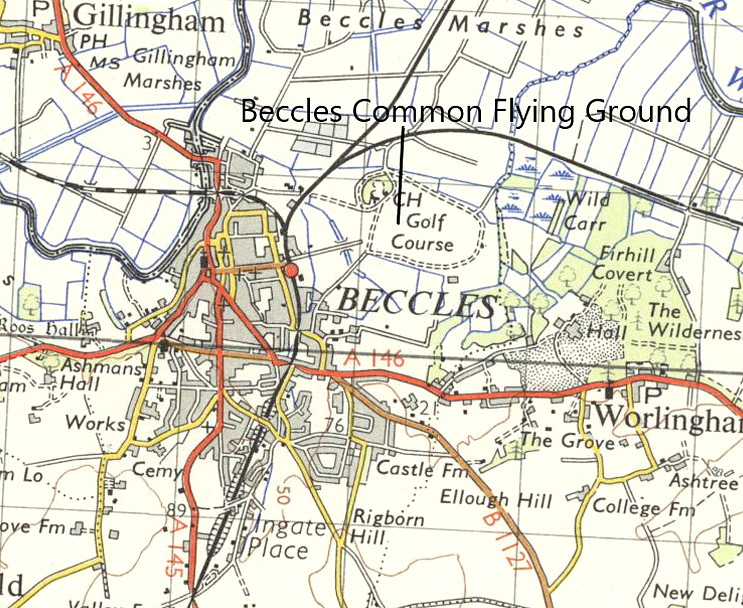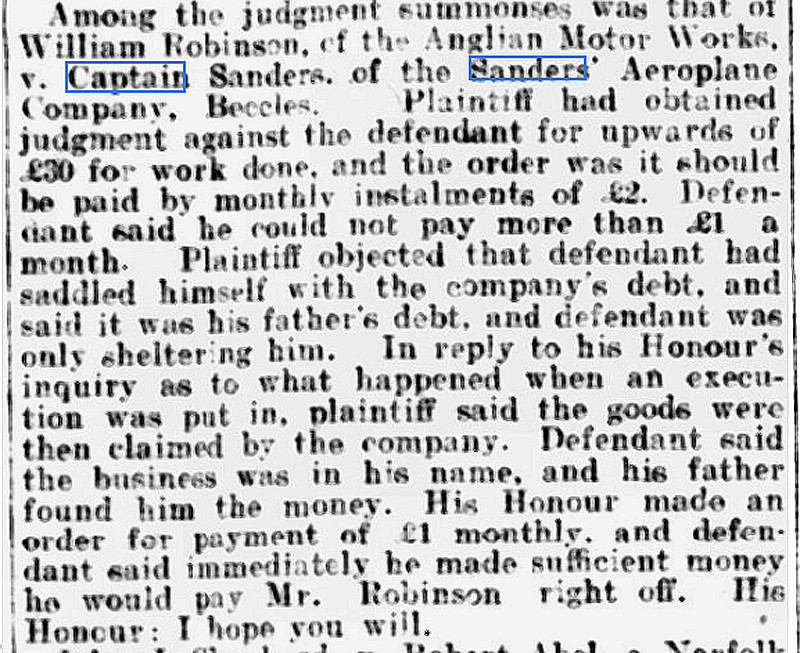Beccles Common
BECCLES COMMON: Company aerodrome and factory
Operated by: Sanders Aeroplane Company
Location: Just E to NE of Beccles town centre. S of the A146 today
Period of operation: Late 1910 to 1912
NOTES: Captain Haydn Sanders designed and built his first aeroplane in or around 1910, and was flight testing it at BENACRE DENES about 5 miles south of Lowestoft, certainly by February 1910. (See seperate listing for this location). After crashing and wrecking his machine, (which aeroplanes were called in those days), colliding on landing with telephone wires, he sensibly decided to find a more suitable flying site. And build a new aeroplane rather than try to repair the wrecked example.
His idea was to form a company designing and building aircraft, incorporating many new and novel innovations. A couple of which were many years ahead of the time. For example, he designed a retractable undercarriage, surely the first ever? But, relying on skids to land back on. His Sanders Type 1 also featured downturned wing tips, a most remarkable feature. At that time of course the knowledge of aerodynamics was virtually non-existent, but his instincts were spot on. For example I have flown over sixty different Cessna 172s, the true classic light aircraft of all time, but only later examples had this feature.
He also devised a basic 'flight simulator', the 'Teacher'. Which I think was the first ever? (Hold on a mo whilst I find my flack jacket). And I notice, this aeroplane also incorporated dihedral for the wings, which greatly aids lateral stability. How effective the ailerons and rudders were is subject to speculation, but I suspect not very effective?
I suspect that the main problem in making this design concept a commercial success is that it is based on the highly erroneous concepts of how an aeroplane should be built by the Wright brothers in the U.S.A. Their design being very unstable, and in fact something of an aerodynamic disaster - an accident waiting to happen! Especially for student pilots. By this time far, far better monoplane designs were emerging. Indeed, Blèriot had flown across the English Channel in 1909 on a monoplane of his design.
So, in effect Captain Sanders was backing himself into a cul-de-sac, with no future potential. Even though it appears, he had largely solved the stability problems, not least by incorporating dihedral into the main wings. From the accounts below it seems fairly clear that by mid 1912 the writing was on wall for the Sanders Aeroplane Company. Also, this location especially in those days, was a long way distant from the main centres of aviation. Nevertheless, this project certainly attracted a lot of attention, including the two top selling aviation magazines.
A MICHAEL T HOLDER GALLERY
Mike Holder is great friend of this 'Guide', and has contributed many 'galleries'. Without much if any doubt, this addition to this 'Guide' of what is, today, a very little known flying site, very revealing - indeed quite an education.
Note: The diagram, article and photo were published in Flight magazine on the 10th December 1910. As said above, perhaps the first example of a basic 'flight simulator'?
Note: The short article above was published in The Halesworth Times and East Suffolk Advertiser on the 17th January 1911. The advert was published in Flight magazine on the11th March 1911.
Note: The article in two parts was published in Flight magazine on the 4th March 1911, along with the design layout diagram for the Sanders Type 1.
Note: The sketch of the undercarriage arrangement was published in Flight magazine on the 22nd April 1911, whereas the advert appeared in Flight magazine on the 29th April 1911, a week later.
Note: The article above was published in the Globe on the 25th March 1911. The two photographs, showing front and side views of the Sanders Type 1 were published in Flight magazine on the 4th March 1911, whereas the advert was also published in Flight but on the 22nd April 1911.
Note: The article was published in Flight magazine on the 22nd April 1911. The notice was published in the Diss Express on the 2nd June 1911.
Note: The short article above was published in the Diss Express on the 5th May 1911. The first article was published in The Aeroplane on the 21st June 1911. The second article was also published in the Diss Express, but this time on the 21st July 1911.
Note: This article was published in the Norfolk News on the 16th November 1911 and seeming to clearly indicate that major problems were arising for the Sanders Aeroplane Company.
But, obviously Captain Haydn Sanders was not one to give up easily as he placed this advert in Flight magazine on the 6th April 1912. The area view is from my Google Earth © derived database.
A PERSONAL NOTE
I have been interested in aviation since an early age, indeed can just about remember being taken to an air show at HENDON aged around four or five. When my parents moved to Bedfont just south of HEATHROW when I was seven years old, it wasn't too long before I got the reggie spotter bug. And, have to admit that until I started research for this project over twenty years ago, (in 2023), I had no interest in our aviation history prior to WW2, let alone prior to WW1.
However, it wasn't long before that soon began to change. Indeed, the more I learnt about our aviation heritage, especially prior to WW1, the more fascinating the subject became. Influenced no doubt by obtaining a Private Pilots License back in 1989, when learning to fly light aircraft had long been a safe and highly structured system. Trying to imagine how it must have been learning to fly those very basic and, to a large extent, by todays standards, hardly properly tested aircraft, has become something of considerable interest.
I do hope, that for some at least, this 'Guide' helps to provide others to delve into this aspect of our aviation heritage.
We'd love to hear from you, so please scroll down to leave a comment!
Leave a comment ...
Copyright (c) UK Airfield Guide














